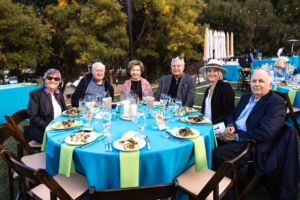Via West has facilities for growing plants in a large Greenhouse. Goals for the Greenhouse include (1) An “indoor” botanical garden and (2) To prepare plants for transplant into the outdoor garden space
The Greenhouse facility is quite well-equipped with electricity, water, overhead watering system, strong ventilation, heating, as well as planting benches, lots of pots of various sizes and some planting mixtures in bags. The condition of the greenhouse is mostly fine, requiring some work to pick up, sort out, clean up, composting old soils, washing the glass, etc.
The Garden has raised beds that need to be weeded and prepared for the next planting. The Lions have built the fences that contain the garden plots, which work well to keep out the deer. There are other critters for which we need to use different barriers and other remediations to protect the plants: raccoons, ground squirrels, and moles.
What we learned about the needs, previous uses, future ideas for the greenhouse and garden.
- The camp is normally used much of the year and young people come to the camp for overnight stays and eat in the dining facilities. The idea is that the greenhouse and garden offer Farm-to-Table produce to the fullest extent possible.
- The Via West Camp is used both for Via Services West clients who are children and adults with disabilities, as well as for the Walden West Environmental Education classes for elementary school children.
- Normally, the camp would be in full swing for the summer, but everything is on hold for now.
- Still, now a good time to start working to get the greenhouse and then the garden space into productive use to prepare for whenever and however the camp will start back up. Veggies planted in early Fall will take 60 to 120 days to yield. Food banks can take up the excess produce until the camp opens.
Ideas for a Plan to startup the greenhouse and prepare the garden.
- First, hold workdays to clean out and clean up the Greenhouse. [Task list below]
- Then, a pilot project would be a reasonable way to begin. Simple and small. Create a “shopping list” for that to include seeds, soils and fertilizers. The aim would be to plant for Fall harvest, and plants would be started both in the greenhouse and straight in the garden as appropriate.
- Meanwhile we can try to recruit some volunteers/consultants with several types of expertise to guide bringing the operation into full swing.
- Ideas for recruiting the experts include
- Seeking Master Gardeners who are always “on the hook” to teach what they have been taught in their trainings; they may be willing especially now when library programs and such for large gatherings cannot be planned;
- Seeking consulting from a greenhouse manager who can help us with the timing of tasks (starting seeds, etc.) for each season, given our climate, as well as, ideas for utilizing the greenhouse to create a year-round Botanical Garden where some plants are allowed to mature and become the décor of the greenhouse; and
- Consulting with the leaders who work with each type of group who come as campers to learn how to support garden projects suited to the different interests and capabilities.
Tasks to clean up the greenhouse and prepare it for planting. It is important for the greenhouse to be cleaned well so that new plants do not pick up any diseases from what has been left behind.
Cleaning and organizing:
- Tie up the suspended trellis for the ease of movement of workers; attach caution tape to warn about the hanging trellis – sharp edges
- Set up tub to use as a temporary sink, soap, towels
- Empty pots of the old soil into barrels to add to the garden
- Compost pile: used peat pots
- Trash what can’t be reused or composted
- Bring picnic tables up to a flat area near the greenhouse for cleaning work
- Take all supplies out of the greenhouse (wheelbarrow for the heavy soil bags)
- Crew to brush clean and vinegar wash the plastic and clay pots; dry before storing away
***This will need several workers, as there are many, many used pots to reclaim
- Check that the floor “drain” is clear.
- Sweep and brush down the wire benches and the floor
- Hose down the inside shelves and brush clean. Maybe use hose on clear plastic walls.
- Wash the concrete floor. Push broom to get all the water out where there is an opening
- Set up ladders as needed to brush clean and wash the window walls inside and out
- Brush wash the clear plastic walls as recommended by manufacturer.
- Once the greenhouse is clean and dry, box up the supplies that are cleaned. Label the boxes
- Bring boxes of supplies and bags of soil back in and arrange in an organized way
Technical:
- Check out all utilities: sprinklers, louvered windows, exhaust fans, lights, electric outlets, water supply for hoses, etc.
Garden:
- Weed the whole area including the raised beds by pulling weeds or attack with hoes and rakes – send the debris to the yard waste bin (not for local compost)
- Raised beds: pull up anything that’s done producing, smooth out the soil for planting. These spent plants can be composted in the Camp’s compost.
- Anything that may still be producing, leave alone








